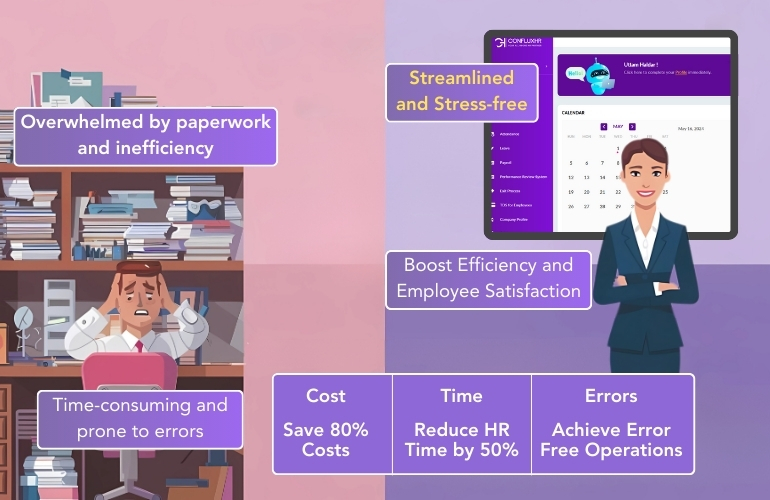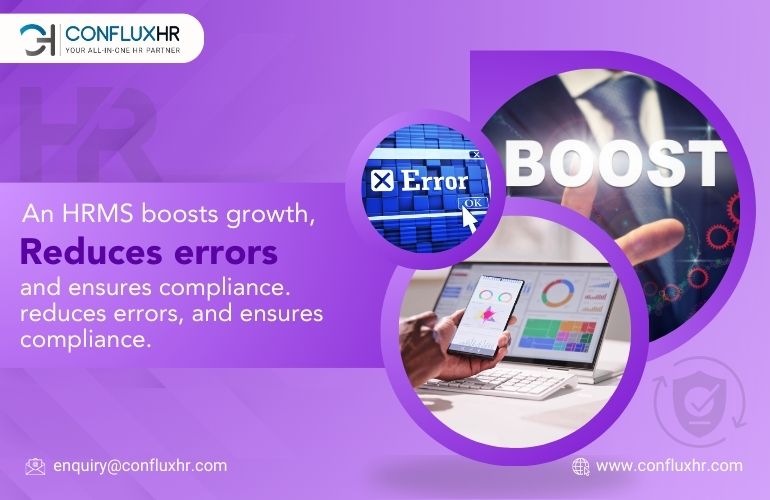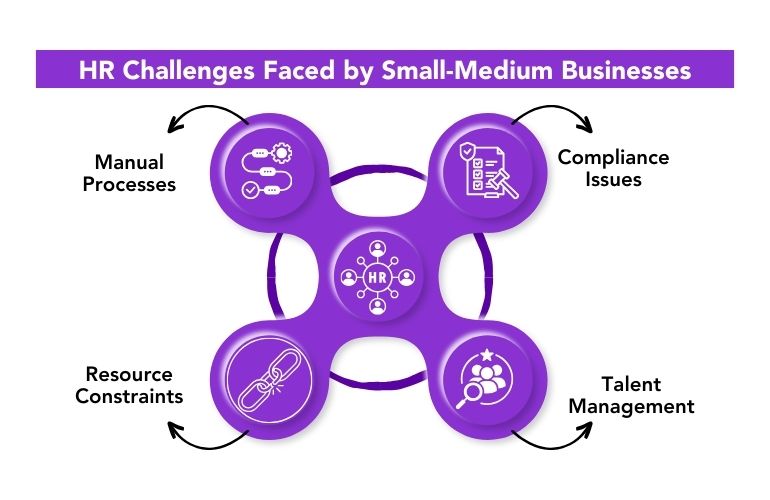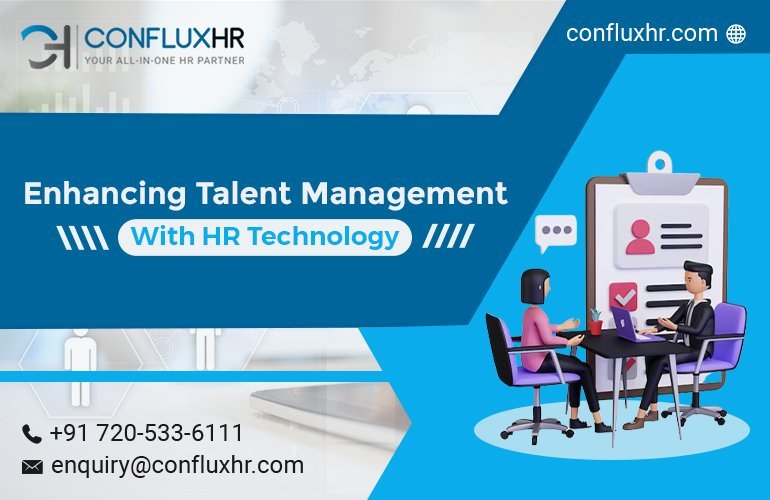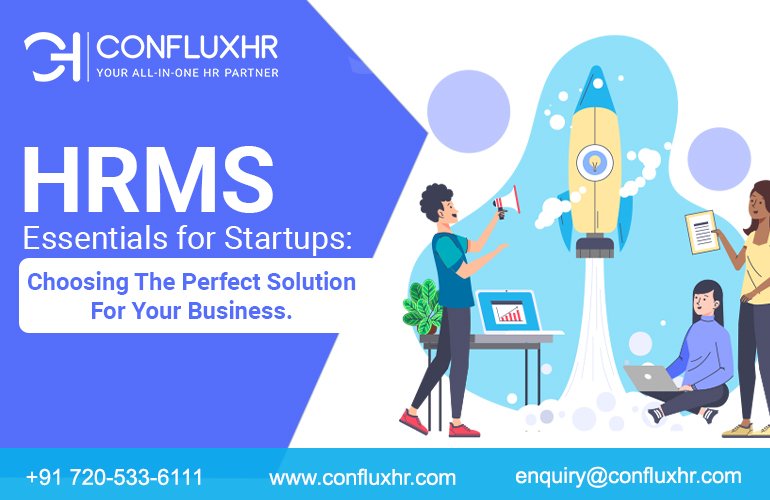Did you know that 30% of SMBs in India still rely on manual processes to handle HR tasks, resulting in inefficiencies, compliance risks, and poor employee experiences? On the other hand, businesses that adopt HR Management Software report a 40% improvement in HR efficiency and a significant reduction in operational costs. As the workforce evolves and competition intensifies, SMBs must embrace HR Solutions Software to stay ahead.
For Indian SMBs, the challenges of managing HR processes manually—tracking payroll, monitoring leave requests, and ensuring compliance—can be overwhelming. Enter HRMS (Human Resource Management System), a game-changing solution that automates routine HR tasks, streamlines workflows, and improves decision-making.
The Role of HRMS in Streamlining HR Processes
A Human Resource Management System (HRMS) is more than just software; it’s a comprehensive platform designed to centralize, automate, and optimize HR operations. Here’s how it transforms HR for SMBs in India:
- Payroll Automation
Manual payroll processing is prone to errors and delays. An Automated HR System ensures accurate calculations, compliance with tax regulations, and timely salary disbursements.
- Employee Self-Service
HRMS for Employee Self-Service empowers employees to handle basic tasks like applying for leaves, accessing payslips, and updating personal information. This reduces dependency on HR teams and improves employee satisfaction.
- Recruitment Management
An HRMS streamlines the hiring process, from posting job openings to onboarding new hires. AI-driven tools can screen resumes, schedule interviews, and provide insights into candidate suitability.
- Compliance Management
Staying compliant with labor laws and regulations is crucial for SMBs. HRMS tools ensure timely compliance by automating statutory filings and maintaining audit-ready records.
By automating these core HR functions, businesses experience streamlined HR workflows that save time, reduce errors, and improve overall efficiency.
Key Benefits of HR Management Software for SMBs
Implementing HR Management Software offers numerous benefits that directly impact the productivity and profitability of SMBs.
- Reduction in Administrative Work
HR teams often spend hours on paperwork and manual data entry. HRMS eliminates these repetitive tasks, freeing up HR professionals to focus on strategic initiatives like employee engagement and workforce planning.
- Improved Employee Satisfaction
Employees value transparency and autonomy. Employee engagement tools integrated into HRMS allow employees to access their information, submit requests, and track progress without delays. This fosters a positive work culture.
- Enhanced Analytics and Insights
With Cloud-based HRMS, businesses gain access to real-time analytics that help in tracking performance, identifying bottlenecks, and making data-driven decisions. For instance, SMBs can monitor trends in absenteeism or turnover and proactively address issues.
- Cost Savings
By reducing errors, automating processes, and minimizing reliance on external consultants, HRMS delivers tangible cost savings for SMBs. Over time, the ROI of investing in an HRMS far outweighs its initial cost.
These benefits position HRMS as a must-have tool for SMBs looking to scale their operations and compete effectively in the market.
How Automated HR Systems Enhance Employee Self-Service
One of the most impactful features of HRMS is its ability to provide Employee Self-Service tools. Here’s how it makes a difference:
- Simplified Leave Management
Employees can check their leave balances, apply for time off, and track approval status—all without involving HR manually. This streamlined process improves efficiency and transparency.
- Accessible Payroll Information
Gone are the days of waiting for HR to provide salary slips or tax forms. With HRMS for payroll management, employees can download these documents directly from the system, ensuring convenience and security.
- Performance Tracking and Feedback
HRMS tools allow employees to view their performance goals, receive feedback, and track their progress. This fosters accountability and motivates employees to improve.
- Personal Data Updates
Employees can update their personal details, such as bank information or emergency contacts, directly in the system. This reduces administrative burden on HR teams.
By offering these features, HRMS not only enhances the employee experience but also enables HR teams to focus on high-value tasks rather than administrative chores.
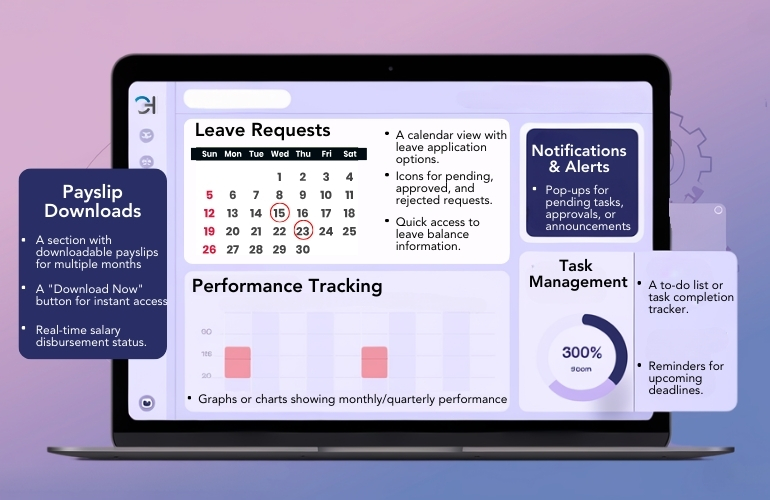
The Future of HRMS in 2025 for Indian SMBs
The HRMS landscape is rapidly evolving, and 2025 promises exciting advancements for SMBs in India. Here are some trends shaping the future:
- AI and Machine Learning Integration
AI-driven HRMS tools will analyze employee data to provide predictive insights, such as identifying flight risks or recommending training programs.
- Mobile-First HRMS Platforms
As more employees work remotely or in hybrid setups, Cloud-based HRMS platforms with mobile apps will become indispensable. Employees can manage their HR tasks on the go, improving flexibility and accessibility.
- Focus on Employee Experience
Future HRMS tools will prioritize employee well-being by integrating wellness programs, mental health resources, and engagement surveys directly into the platform.
- Data Security and Privacy Enhancements
With increasing concerns about data breaches, HRMS providers will focus on advanced encryption, compliance with data protection laws, and secure cloud storage.
By staying ahead of these trends, SMBs can ensure that their HR processes remain relevant and effective in the face of changing workforce dynamics.
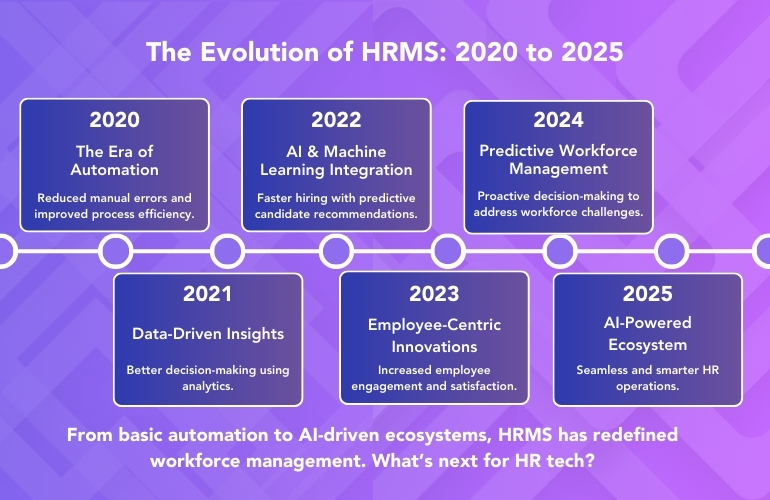
Conclusion
For SMBs in India, the journey to efficient and effective HR processes begins with adopting HR Management Software and HR Solutions Software. From automating payroll and leave management to empowering employees with self-service tools, HRMS offers a host of benefits that can transform your business operations.
The future of HR is here, and it’s powered by technology. Don’t let manual processes hold you back—invest in an HRMS solution today and unlock the full potential of your workforce.



